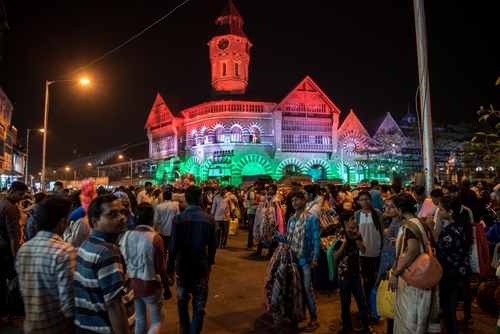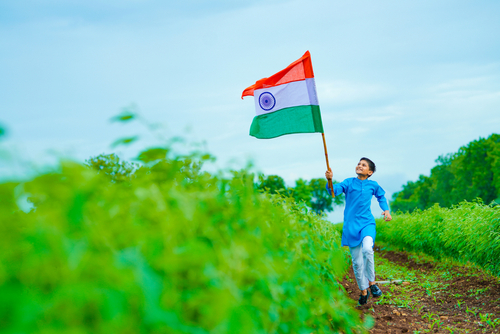Every year on January 26th, India comes alive with vibrant color, immense pride, and patriotic fervor to celebrate Republic Day. This national holiday is more than just a day off; it’s a powerful commemoration of India’s journey to becoming a sovereign republic. From the grand military parade in New Delhi to smaller community events across the country and among the Indian diaspora worldwide, it’s a day that unites the nation in a shared sense of identity and history.
Whether you’re planning to witness the celebrations in person or simply want to understand the cultural importance of this day, this guide will walk you through the history, traditions, and modern celebrations that make Republic Day a truly special occasion.
The History and Origins of Republic Day
To understand Republic Day, we must first look back to India’s struggle for independence. India gained freedom from British rule on August 15, 1947. However, at that time, the country did not have a permanent constitution; its laws were still based on a modified version of the British government’s colonial-era act.
The Constituent Assembly, a body of elected representatives, was tasked with drafting a new constitution for the independent nation. This monumental effort took nearly three years. Finally, on January 26, 1950, the Constitution of India came into effect, officially marking India’s transition to a sovereign, socialist, secular, and democratic republic.
The date—January 26th—was deliberately chosen. In 1930, the Indian National Congress had declared Purna Swaraj (complete independence) from British rule on this same day, and it was celebrated as India’s Independence Day for 17 years. By adopting the Constitution on this date, the country honored the legacy of its early freedom fighters.
How India Celebrates Republic Day Today
Republic Day is celebrated with great enthusiasm across India and by Indian communities globally. The festivities blend formal state ceremonies with vibrant cultural traditions.
The Grand Parade in New Delhi
The main event is the Republic Day Parade held along the Kartavya Path (formerly Rajpath) in the capital, New Delhi. This spectacle showcases India’s military strength, cultural diversity, and technological progress.
- Military Might: The parade begins with the President of India unfurling the national flag, followed by the national anthem. It features contingents from the Indian Army, Navy, and Air Force marching in perfect sync. The latest military hardware, including tanks, missiles, and radar systems, are put on display. The celebration culminates with a breathtaking flypast by the Indian Air Force jets, often leaving trails of saffron, white, and green—the colors of the Indian flag.
- Cultural Tableaux: A highlight of the parade is the series of floats, or jhankiyan, from various states and union territories. Each float is a vibrant, moving art piece depicting the unique culture, traditions, and achievements of its region. From folk dances and music to historical landmarks, these tableaux offer a dazzling glimpse into India’s rich diversity.
- A Symbol of Unity: The parade is a powerful symbol of unity, bringing together people from every corner of the nation to celebrate their shared identity as Indians.

Traditions, Food, and Family
Beyond the official ceremonies, Republic Day is a day for family and community.
- Family Gatherings: Many families watch the parade live on television, making it a shared morning ritual. Schools and residential colonies organize their own flag-hoisting ceremonies, followed by cultural programs where children perform patriotic songs and dances.
- Patriotic Music: The air is filled with the sounds of patriotic songs like “Vande Mataram,” “Ae Mere Watan Ke Logon,” and “Maa Tujhe Salaam.” These songs evoke a deep sense of national pride and nostalgia.
- Festive Food: While there is no single traditional dish for Republic Day, many families and restaurants prepare tri-color meals. You might find biryani or pulao layered with saffron-colored rice, white rice, and green spinach rice, or desserts like tri-color barfi (a sweet made from milk solids) and sandwiches made with mint chutney and carrots. It’s a creative and delicious way to get into the spirit of the day.
Evolving Trends and Celebrations
In recent years, celebrations have evolved. The 2024 parade, for instance, was notable for its theme of Nari Shakti (women’s power), featuring all-women contingents in the parade. This trend highlights a modern India that is proud of its progress in gender equality.
Furthermore, with the rise of social media, Republic Day has become a global digital event. Indians around the world share photos, videos, and messages of pride, connecting with their heritage no matter where they are. Diaspora communities often organize their own cultural events, bringing a piece of India to their adopted homelands.
Frequently Asked Questions (FAQ)
What is the difference between India’s Independence Day and Republic Day?
Independence Day (August 15th) celebrates India’s freedom from British rule in 1947. Republic Day (January 26th) marks the day the Constitution of India came into effect in 1950, officially making it a sovereign republic.
Who is the chief guest at the Republic Day parade?
Every year, India invites a head of state or government from another country as the chief guest for the parade. This is a significant diplomatic honor and symbolizes the strengthening of international ties.
How can I get tickets for the Republic Day parade?
Tickets for the parade are available for purchase online through the Ministry of Defence’s official portal a few weeks before the event. Both reserved and unreserved seating options are available, but they sell out quickly.
What do the colors of the Indian flag represent?
The Indian flag has three horizontal stripes. The top saffron stripe signifies courage and sacrifice, the middle white stripe represents peace and truth, and the bottom green stripe stands for fertility, growth, and auspiciousness of the land. The navy blue wheel in the center, known as the Ashoka Chakra, represents the eternal wheel of law.
